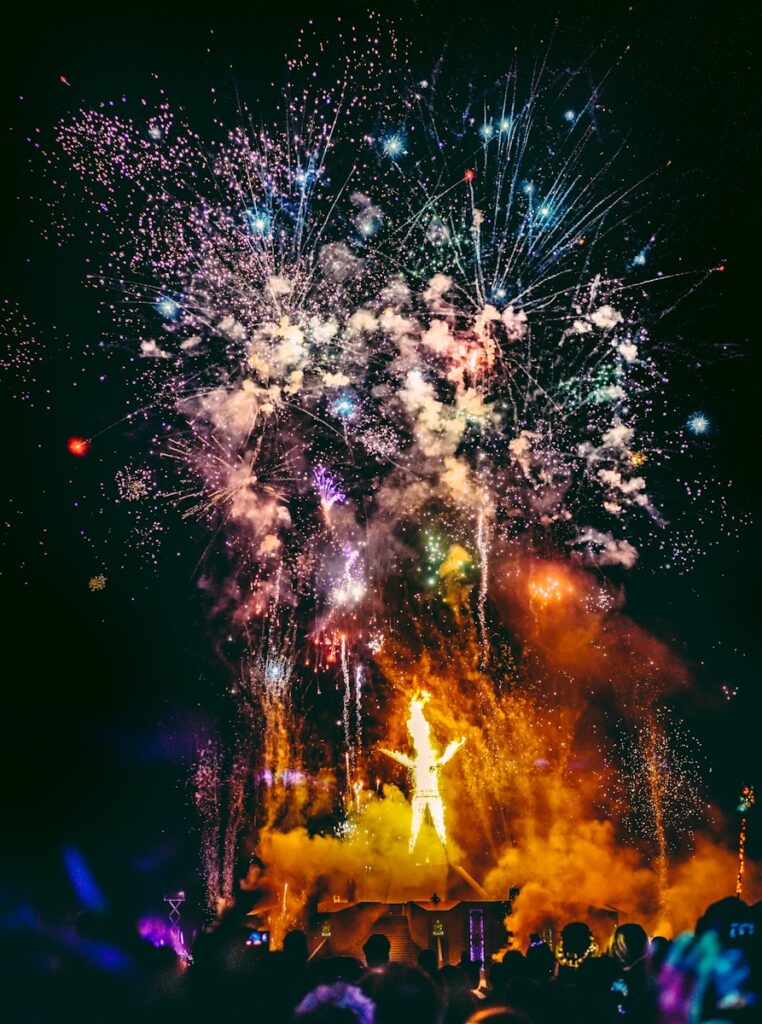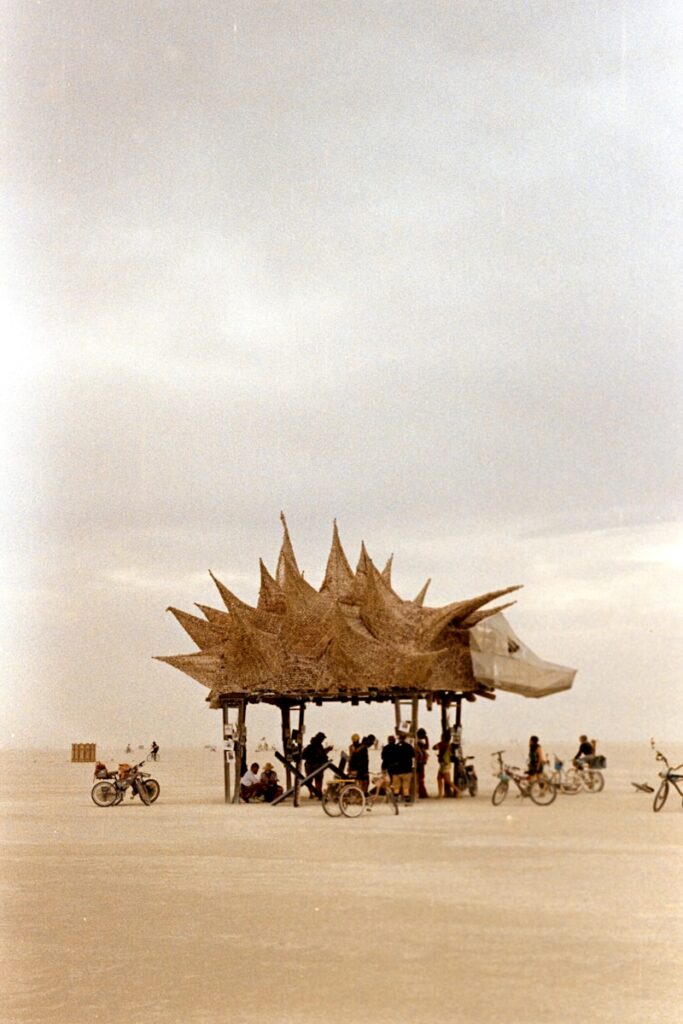Physical Address
304 North Cardinal St.
Dorchester Center, MA 02124
Physical Address
304 North Cardinal St.
Dorchester Center, MA 02124

Burning Man festival draws tens of thousands to Nevada’s Black Rock Desert each year, but beneath the art and community lies a growing concern about drug-related incidents. Law enforcement has ramped up efforts with undercover operations and increased patrols, leading to numerous arrests for drug possession and distribution at recent festivals. The contrast between the event’s reputation for freedom and the strict enforcement creates ongoing tension.
Police recently arrested people heading to the festival with large quantities of illegal substances, including cocaine, methamphetamine, and prescription drugs. Burning Man’s drug enforcement policies remain strict despite the event’s countercultural image. The festival organizers face pressure to balance safety with the community’s values.
Safety concerns extend beyond arrests, as 1,524 people were injured at Burning Man last year. The combination of harsh desert conditions, drug use, and risky activities creates dangerous situations. Festival attendance has also shown signs of decline following previous years’ problems.

I have been at this festival. And honestly I did not like it. One of the reasons of course the accommodations, but the main thing was the drug consume. When it reaches a point where it is no fun anymore, that is for sure too much.
And as a woman (but for sure there are also a lot of women going there for that particular reason) you are actually only a piece of meat. Especially since the trend that Silicon Valley guys need to go there to proof themselves and anything goes for them, I didn’t experience it as a safe environment.
I am very glad to hear that there is more police presence to keep everyone safe and healty.
Drug-related problems at Burning Man have intensified significantly in recent years. Law enforcement agencies report increased arrests and seizures, while organizers prepare for more overdoses and fatalities in Nevada’s Black Rock Desert.
The Burning Man festival has experienced a troubling rise in drug-related medical emergencies. Last year alone, 1,524 people were injured at the annual event, with many incidents linked to substance abuse.
Festival organizers have doubled their Narcan supply to 100 doses for 2025. This nasal spray reverses fatal opioid overdoses by blocking their effects on the nervous system.
Medical teams treat overdoses daily during the nine-day event. The harsh Nevada desert environment makes drug reactions more dangerous and harder to treat.
Emergency responders struggle with the remote location in Black Rock Desert. Getting critically ill patients to hospitals takes hours, making overdose prevention crucial.
Police have dramatically increased their presence around the Burning Man festival. More than 20 sheriffs are now assigned to patrol the festival site.
Recent arrests show the scale of drug trafficking to the event. Three cars headed to Burning Man were stopped and found filled with drugs in August 2025.

One 48-year-old man was caught with:
Drug-related arrests result in fines of thousands of dollars. In 2019, 58 people were arrested with most facing drug charges.
Law enforcement uses undercover operations to catch dealers and users. One San Francisco man faced felony charges and $500,000 bail for marijuana possession.
The variety and potency of drugs at Burning Man has expanded dramatically. Traditional festival drugs like marijuana and ecstasy now mix with dangerous opioids and synthetic substances.
Fentanyl poses the biggest new threat in the Nevada desert. This powerful opioid causes fatal overdoses even in tiny amounts.
Party drugs remain popular but are increasingly contaminated with unknown substances. Ecstasy pills often contain methamphetamine or other dangerous additives.
Burning Man’s strict drug policies have not reduced usage. Instead, attendees bring larger quantities to avoid multiple supply runs.

The festival’s remote Black Rock Desert location makes drug testing impossible. Users cannot verify what substances they consume, increasing overdose risks significantly.
Drug use at the desert festival creates serious safety risks that affect thousands of attendees each year. These dangers range from immediate medical crises to accidents that can turn fatal in the harsh Nevada environment.
The desert environment makes drug-related health problems much worse. High temperatures during the day and cold nights put extra stress on people using substances.
Dehydration happens faster when people use drugs like MDMA or stimulants. These substances make the body heat up and cause excessive sweating. In the desert heat, this combination can lead to dangerous overheating.
Common drug-related emergencies include:
Many attendees mix different substances without knowing how they interact. Alcohol combined with other drugs increases the risk of overdose. The large quantities of drugs seized by police show the variety of substances present at the event.
Prescription drugs like Oxycodone and Xanax are also common. These can slow breathing and heart rate to dangerous levels.
Drug use leads to poor decision-making that puts people in danger. The festival’s remote location makes rescue efforts harder when accidents happen.
People under the influence often ignore safety warnings. They may climb on structures, ride bikes without lights at night, or venture too far from camp. The wooden effigy and large art installations become dangerous when people are impaired.
Risk factors increase dramatically with drug use:
The festival’s “radical self-reliance” principle assumes people can take care of themselves. This becomes impossible when drugs impair judgment. People may not recognize when they need help or may refuse assistance.
Dust storms add another layer of danger. Impaired individuals cannot respond properly to weather emergencies or follow safety protocols.
Medical teams face unique problems treating drug-related emergencies at Burning Man. The remote desert location limits their resources and evacuation options.
Key medical challenges include:
Many attendees avoid seeking medical help because they fear legal consequences. This delay makes treatment harder and outcomes worse. The festival’s strict drug enforcement policies create barriers to getting help.
Medical staff cannot always identify what drugs someone has taken. Street drugs often contain unknown substances or dangerous additives. This makes treatment difficult and sometimes dangerous.
The festival’s size strains medical resources. Over 70,000 people attended last year, creating huge demand for medical services. Drug emergencies take up significant staff time and resources that could help other attendees.
Evacuation to hospitals takes hours due the remote location. This delay can be fatal for serious overdoses or heat-related emergencies.
The festival’s unique culture creates specific risks around substance use, while operational struggles with weather conditions and declining attendance compound safety issues. Management faces mounting pressure to balance the event’s free-spirited principles with participant safety.
Burning Man operates on principles of radical self-expression and personal responsibility that shape how participants view drug use. The festival’s core values of self-expression and radical inclusion create an environment where substance use becomes normalized within the community culture.
The event’s temporary city structure removes many conventional social boundaries. Participants often view the desert gathering as separate from normal society rules. This mindset can lead to more experimental and riskier drug behaviors.
Cultural Factors Contributing to Increased Use:
The festival’s growth has attracted participants less familiar with harm reduction practices. Newer attendees may lack knowledge about desert conditions and drug interactions that veteran participants understand.
Burning Man faces unique challenges balancing law enforcement with its countercultural identity. The festival occurs on federal land, requiring coordination with multiple agencies while maintaining community trust.
Security measures focus primarily on perimeter control rather than internal drug enforcement. This approach reflects the event’s struggle to balance law enforcement with core values. Limited internal policing can allow dangerous substances to circulate unchecked.
Current Security Limitations:
The organization has implemented some harm reduction programs. However, these efforts remain limited compared to the scale of substance use at the event.
Desert conditions at Black Rock significantly amplify drug-related risks and complications. Extreme temperatures, dust storms, and dehydration create dangerous combinations with various substances.
High temperatures can cause heat stroke when combined with stimulants or alcohol. Many drugs impair the body’s ability to regulate temperature effectively. Weather conditions and poor environmental factors have contributed to participant injuries and medical emergencies.
Environmental Risk Factors:
The 2023 event demonstrated how weather emergencies compound substance-related problems. Participants stranded by mud and flooding had limited access to medical care while potentially under the influence of various substances.
Declining ticket sales and rising costs have changed the festival’s participant demographics. These shifts affect drug use patterns and safety outcomes.
Higher ticket prices have created a wealthier participant base with greater access to expensive or exotic substances. Wealthy attendees may have less experience with drug safety practices than the festival’s original counterculture community.
Demographic Impact on Drug Issues:
Financial pressures on the organization limit investment in safety infrastructure. The festival’s financial struggles reduce resources available for medical staff, drug testing services, and harm reduction programs.
Multiple organizations and agencies are working to combat the increasing drug issues at the Nevada desert festival through enhanced law enforcement, educational programs, and policy reforms. These initiatives focus on prevention, harm reduction, and supporting those who need help during and after the event.
The Burning Man organization has implemented several harm reduction strategies to protect attendees in the Nevada desert. These programs focus on education rather than punishment.
Zendo Project operates at the festival to provide crisis intervention and support for people experiencing difficult drug reactions. Trained volunteers offer safe spaces for attendees who need help.
Educational outreach includes pre-event information about drug risks and safer use practices. The organization distributes materials about:
Medical stations throughout the festival grounds provide immediate care for drug-related emergencies. Staff receive special training for desert conditions and common festival drug issues.
Peer support networks connect experienced participants with newcomers to share safety knowledge and watch out for each other during the event.
Treatment centers and recovery organizations have developed specialized programs for festival attendees who develop substance abuse problems. These services recognize the unique culture and challenges of the Burning Man community.
Regional treatment facilities in Nevada and California offer programs designed for people from festival communities. They understand the cultural aspects that traditional rehab might not address.
Online support groups connect people year-round who want to address substance use issues related to festival attendance. These forums provide ongoing peer support.
Intervention services help families and friends of regular Burning Man attendees who show signs of developing serious drug problems. Specialists familiar with festival culture lead these efforts.
Recovery coaching specifically for festival participants helps people maintain sobriety while still participating in the community aspects they value.
Government agencies and festival organizers continue to develop new approaches to address the drug crisis at Burning Man. BLM officials are considering restricting festival growth and may implement drug screening measures in future years.
Enhanced law enforcement includes increased traffic stops on routes to the Nevada desert festival. The Pyramid Lake Paiute tribe works with police to minimize drug trafficking by travelers heading to the event.
Drug search proposals have faced resistance from attendees. Nearly 200 participants protested officials’ plans for drug searches and other security measures at the festival.
Policy evolution reflects the challenge of balancing law enforcement with the festival’s values. Burning Man’s drug policy continues evolving as organizers seek balance between safety and the event’s core principles of self-expression and inclusion.
Future restrictions may limit attendance numbers until organizers can better address safety concerns including drug-related incidents and deaths in the Nevada desert.